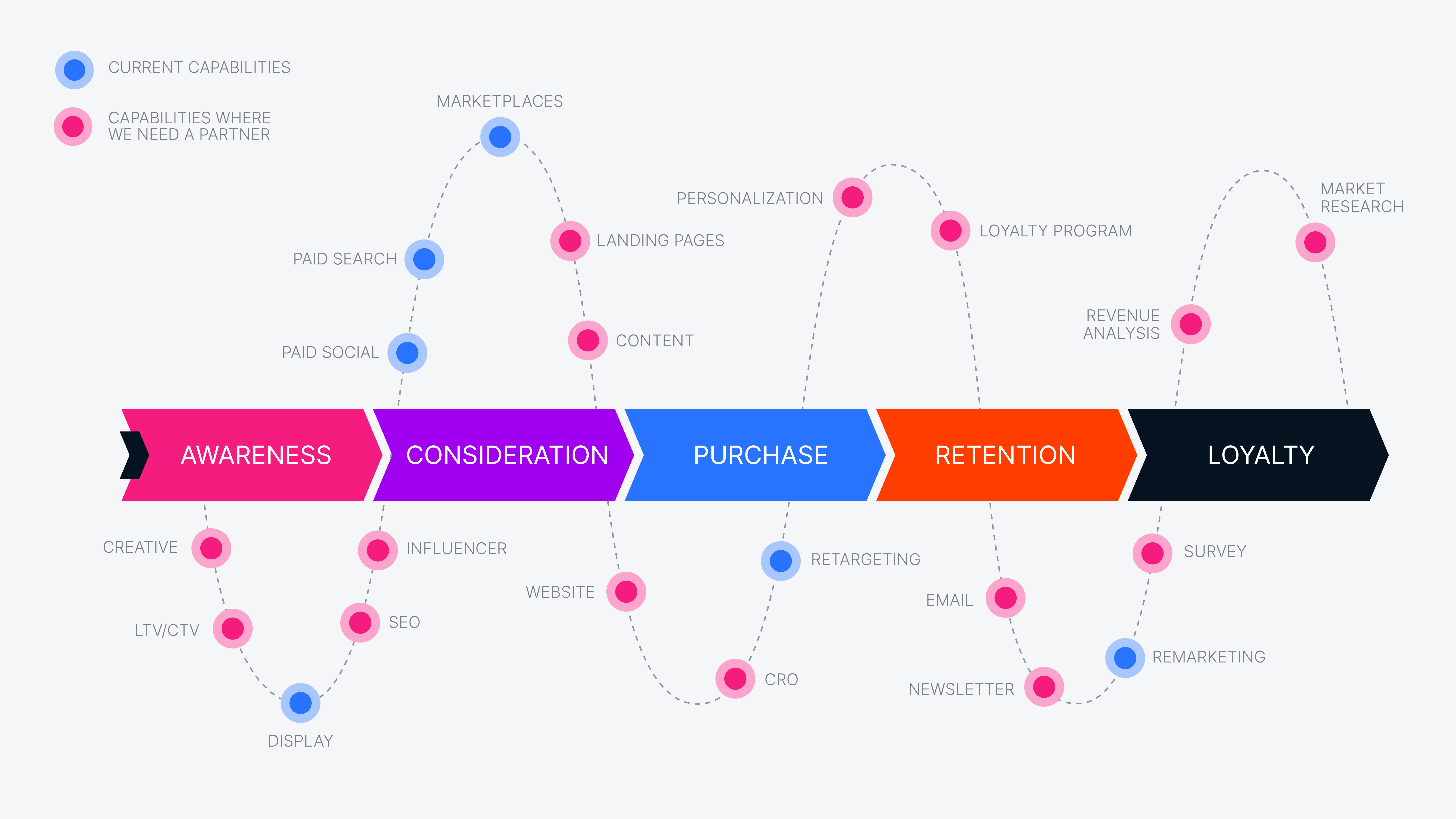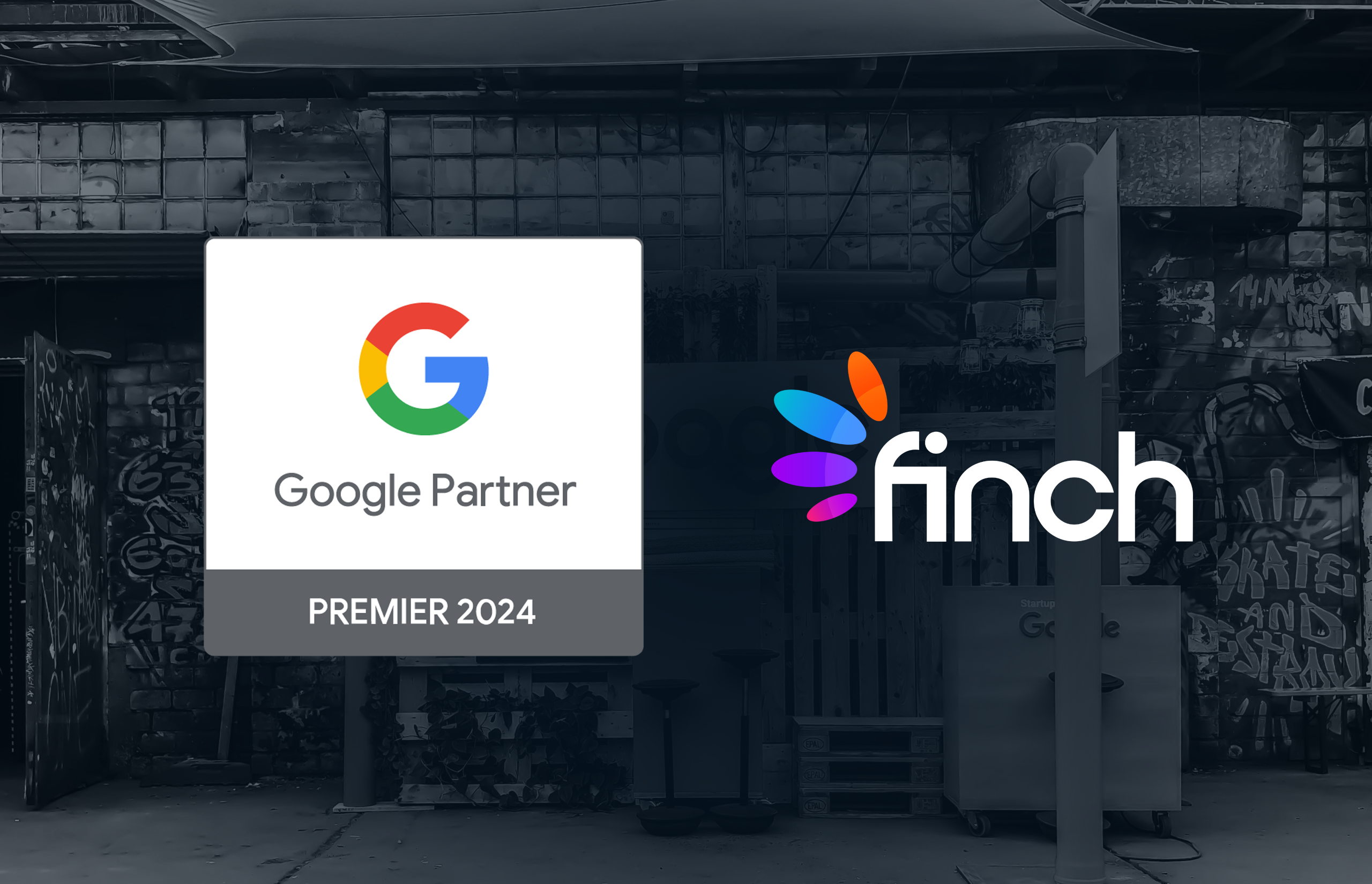When Comparing Google Ads vs Amazon Ads, Does Amazon Deserve Your Spend?
In 2020 there’s hardly any eCommerce company that is not using Google Ads as a traffic source. However, many companies wonder if it makes sense to invest in advertising budgets within Amazon Advertising. Especially considering that 9 of 10 customers check the product price on Amazon before making a purchase.
Many online marketers perceive the Seattle-based eCommerce giant as the biggest competitor. Regardless of whether you view Amazon as a threat, you cannot deny the enormous sales potential on the platform. Online marketing professionals need to decide whether they want to use the reach of Amazon. Or, if they should build a successful niche strategy away from it.

Google Ads vs Amazon Advertising
There Are Many Arguments for Using Both
More than 50% of product searches start directly on Amazon. Many potential buyers use Amazon to review product ratings before making a purchase. Therefore, it pays off to have your products listed on Amazon. For instance, if you decide to not list your products on Amazon, you could lose out on capturing roughly half of all your potential buyers’ attention (and even purchases).
However, launching Amazon campaigns requires a well-thought-out strategy for success. Consider that there are 112 million Amazon Prime subscriptions in the US alone. With half of all product searches starting on Amazon, the competition is thick. You will need to find a way to get your products to stand out against a sea of similitude.
This article’s intention is not to speak either for (or against) selling on Amazon. Instead, this piece seeks to discuss the current advertising power available for eCommerce professionals. Amazon is climbing the ranks; Google has noticed. Even more surprising is that data shows that the “cash cow” that is Google Ads’ performance has stagnated for the first time in history. After years of steady growth, Google sees Amazon as a powerful opponent in the fight for advertising budgets within the eCommerce industry. The latest Amazon Advertising numbers show over 40% growth, making Jeff Bezos’ company the third-largest advertising platform in the world (just behind Google and Facebook).
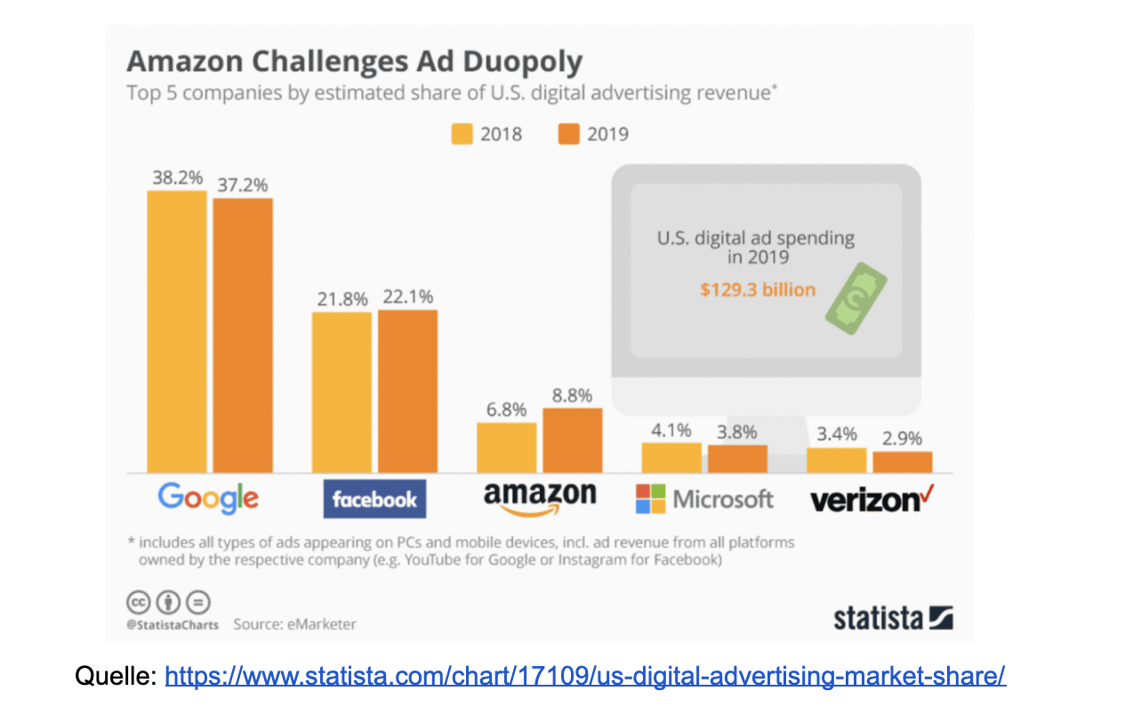
How Did This Happen?
There Are Three Main Reasons for Amazon’s Rise.
- For one thing, Amazon has made a virtue of necessity. There are now over 12 million products available on Amazon in the US alone (as of Novembr 2020). However, due to Amazon’s incredibly extensive product portfolio, it is becoming increasingly difficult to display the right products for the respective search. So why not let advertisers pay for prominent placement of their products? Amazon follows Google’s example. While organic results initially dominated Google’s SERPs (Search Engine Result Pages), many search queries today only show ads on the visible screen. Amazon has learned a lot from Google.
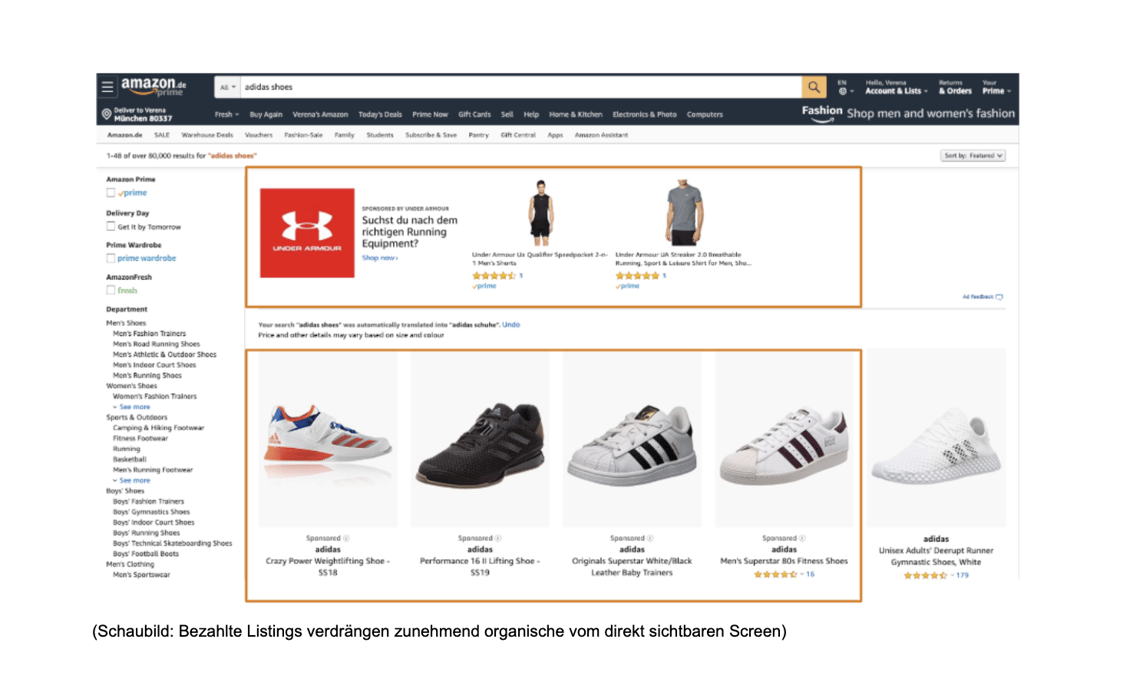
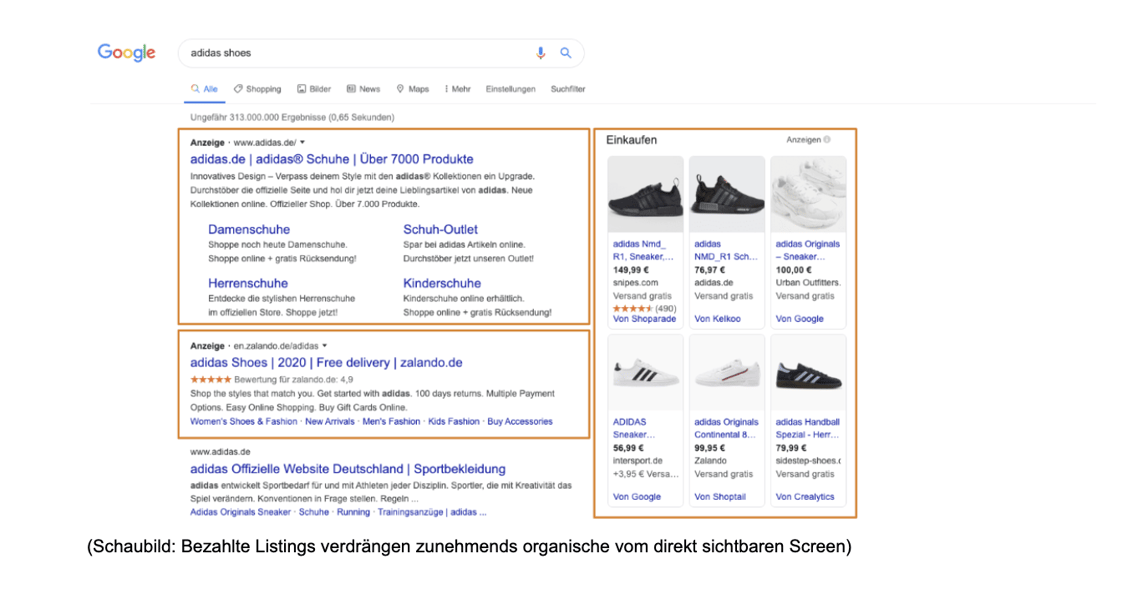
2. Google uses hundreds of signals to understand the intent behind a search and then display the right products or services to the researcher. However, user intent is usually apparent when it comes to Amazon searches: the researcher is there to buy a specific product. Thus, making it theoretically simpler for an eCommerce marketer to get their products in front of the right person. Additionally, when we compare conversion rates between Google and Amazon, we see a stark difference. Amazon Advertising campaigns have much higher conversion rates than Google Ads.
3. Google has always strictly separated organic and paid search results. However, these two worlds merge for Amazon’s search. Why? Well, Amazon not only benefits from the paid click but also from every product sold. So, if a product converts from a placed advertisement, Amazon rewards it with better rankings in organic search. This process benefits the advertiser (Amazon Seller or Vendor) and can even have a higher AcoS (Amazon Cost of Sale, i.e., Cost-Sales Ratio). Unfortunately, Amazon does not (yet) officially communicate the percentage of times this effect occurs. However, there is no doubt that it happens.
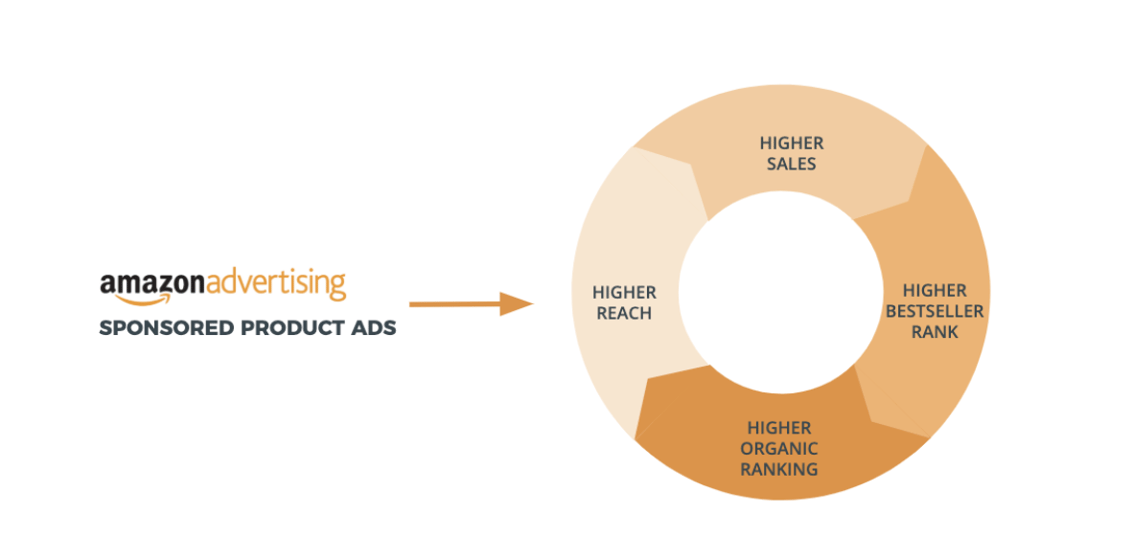
Is Amazon More Expensive?
Careful readers will most likely view this statement critically. In fact, you may realize that, when selling on Amazon, you “pay twice” (for the click and the sale). Technically speaking, that’s partly right. But to have a fair comparison, you need to do a little math. Break down your Amazon calculation while adding your other incurred costs (from your website, server, on-site optimizer, among others). Then, add them to the click costs from Google (or from any other platform that directs traffic to your page). Advertisers tend to overlook this calculation when strictly evaluating Amazon costs.
If you leave out all incurred costs, Amazon might seem like a bit of a rip-off. There are many reasons eCommerce professionals might want to opt-out of selling their products on Amazon. For example, there is a lack of direct customer contact and fleeting brand loyalty. However, this is not the case. All online vendors should start selling products on Amazon through its various advertising options.
And don’t worry about splitting budget allocation between Google and Amazon yet. In the end, your performance KPIs, ROAS, and/or AcoS will dictate how you should use your ad spend.
What Advertising Options Do Both Google and Amazon Offer Online Retailers?
Google offers an extensive range of options for promoting your products and reaching the right customers. In fact, Google owns two of the most essential and best-converting traffic suppliers (Google Search and Google Shopping Ads). Also, there is the Google Display Network (GDN), Youtube, Gmail, and many other ad formats worth using.
Amazon currently offers three different ways to draw user attention to certain products. They offer Sponsored Products, Sponsored Brands, and Amazon Sponsored Display. While Amazon might have fewer advertising solutions, the platform’s conversion rates speak for its capabilities.
Google Ads vs Amazon Ads (and Shameless Self-Promotion)
Of course, both platforms have their advantages and complications. However, our solution, “Finch for Amazon Advertising,” helps eCommerce professionals gain flexibility, control, and better transparency into their Amazon campaigns. Our solutions help you automate, optimize, and control your Amazon campaigns at the SKU-level. We also have a Buy Box reporting feature not available on Amazon!
Read in detail about the added value that our Amazon solution brings to our customers in this case study.
And, as ever, I’d love to answer any questions you might have!
Reach out to me at dan@finch.com.



